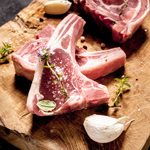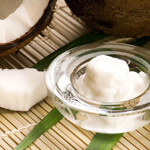Table of Contents
The humble garlic, which is closely related to the onion, is one of the earliest documented plants used by humans for treating disease and maintaining health. Egyptian medical texts, for instance, prescribed garlic for parasites, malaise, circulatory problems and abnormal growths. The Greek physician, Hippocrates, recommended garlic for pulmonary conditions, sores and cancer. Garlic was also held in high esteem by the medical practitioners of ancient India, Rome, Assyria and China.
Clearly, this is a herb that makes friends wherever it grows.
While the advent of modern medicine phased out the use of garlic as a traditional cure-all, many nutritionists still regard garlic as a rare example of a “superfood.” The possible reason for this, I suspect, is that huge amounts of scientific research have been conducted on garlic in recent decades, and the results are – if anything – even more impressive than what the ancient medical texts suggested.
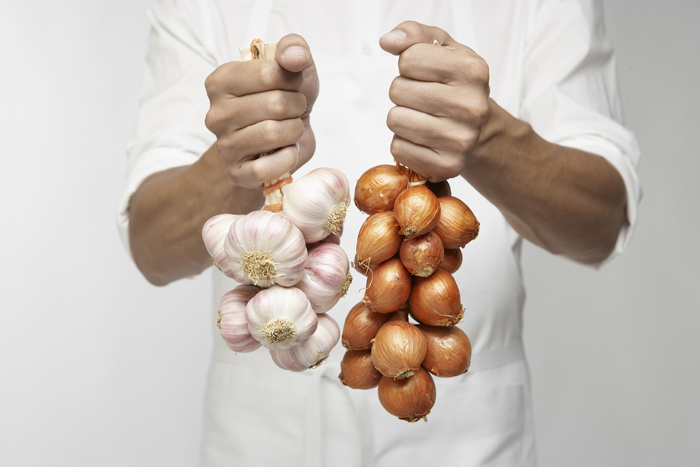
[Garlic and Onions]Garlic has much in common with onion, to which it is closely related
Did you know?
There are over 300 varieties of garlic grown across the world, and they fall into two categories: hardneck and softneck.
Hardneck garlics have thick, unbendable stems that grow from their bulbs, and tend to have complex flavors. Examples of hardneck garlics include purple stripe, porcelain and Rocambole garlics.
Softneck garlics lack the central stem of hardneck garlics, and tend to have mild flavors. Examples of softneck garlics include artichoke and silverskin garlics.
Most garlics bought and consumed today are softneck artichoke garlics, and this is the type of garlic with which this article is concerned.
Why Is Garlic Good for You?

Aside from small amounts of vitamin C, vitamin B6, calcium and manganese, garlic contains virtually no vitamins and minerals at all (1). That’s okay, though, because as we’re about to find out, all of garlic’s main health benefits stem from another source.
Research into the Health Benefits of Garlic
Proven to Fight Cancer
Garlic is one of the natural world’s greatest sources of allicin, a sulfur compound discovered by an Italian chemist in 1944. Countless studies show that this compound, which is responsible for garlic’s strong odor, is a potent antibacterial, antioxidant, antimicrobial, antiviral and antifungal. In other words, allicin is cancer’s greatest nemesis!
Here’s what recent studies have discovered about allicin:
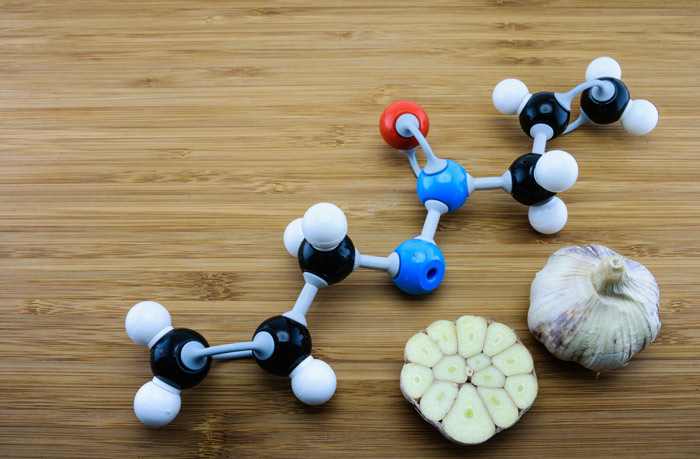
Allicin: a compound that doesn’t mess around
Needless to say, allicin’s anti-cancer abilities are phenomenal! Breast cancer, liver cancer, prostate cancer… there doesn’t seem to be a type of cancer that allicin can’t handle.
Let’s not get too ahead of ourselves, though. Cancer is, in most cases, the end result of a lifetime of neglect, and eating a few cloves of garlic daily will do little for a patient suffering from advanced instances of it. It’s far more realistic to view garlic as a medicine that, when combined with a diet rich in whole foods, guards us from disease.
Reduces the Risk of Heart Disease
If you thought that allicin’s benefits started and ended with cancer prevention, you’d be wrong. Allicin also protects us from several markers associated with cardiovascular disease!
Oh, and did you know that garlic is a blood purifier? Yeah, garlic is a blood purifier. That’s why vampires hate it so much.
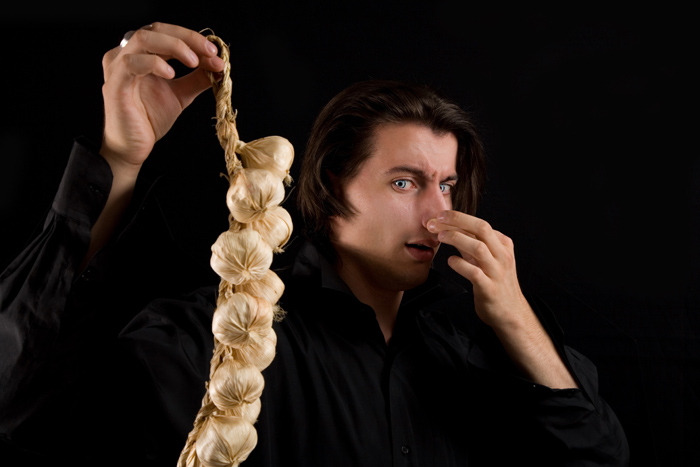
I’m not sure if this man is actually a vampire, but he does look like one
Prevents the Common Cold
Research shows that allicin can prevent the common cold, a virus infection of the upper respiratory tract. A double-blind study featured in the journal Advances in Therapy in 2001 found that the group of volunteers who consumed one allicin-containing garlic capsule daily for 12 weeks between November and February experienced “significantly fewer colds” when compared to the control group. Moreover, recovery rates were faster among the active-treatment group on the rare occasions when they caught colds (10).
These results aren’t too surprising. If garlic is strong enough to fight cancer and heart disease, it’s probably going to make short work out of measly viruses too. Grandma was right!
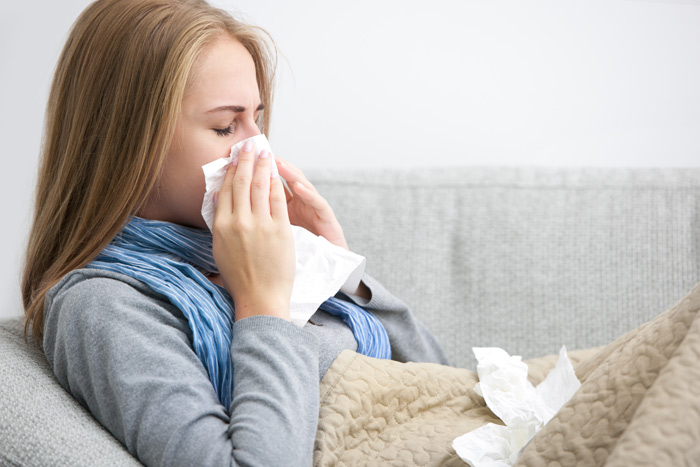
Recommended prescription: two cloves of garlic daily
Protects from Alzheimer’s Disease and Cognitive Decline
An increasing number of studies have found a link between allicin consumption and improved cognition. For example:
The bottom line is that garlic is an excellent brain food. It might not contain the beneficial fatty acids found in coconut oil and fish oil, but it makes up for it with pure neuroprotective power.
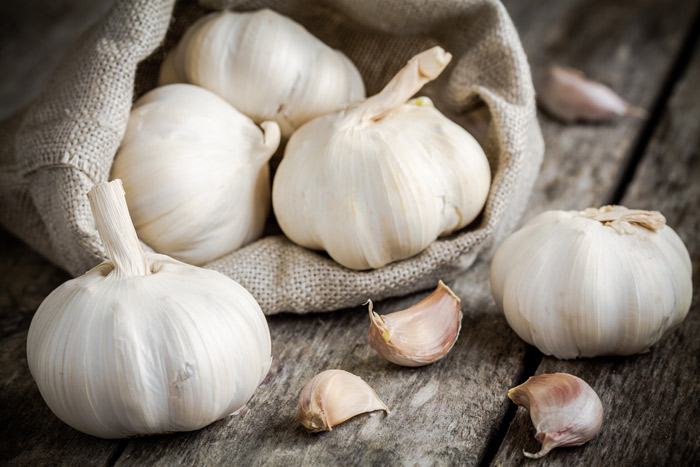
What more can we ask of a woodland herb?
Did you know?
Since allicin is responsible for most of garlic’s health benefits, a lot of people assume that taking allicin supplements – which are widely available in health food stores – is just as good as consuming the real thing. However, this is untrue.
While supplements do provide higher concentrations of allicin than garlic cloves, the allicin in the latter is far more natural – and therefore bioavailable – than in the former. The sad fact is that when we isolate bioactive compounds from their source, we also isolate them from other compounds that aid their uptake. This is fine when we’re testing individual compounds in a laboratory, but when we’re looking to heal our body through diet, remember that whole foods are called whole foods for a reason!
Should I Purchase Organic Garlic?
Since garlic is a natural pest repellent (sulfur compounds are not exactly appetizing to pests), it is seldom sprayed and thus safe to consume in non-organic form. That said, I recommend purchasing organic garlic when possible for peace of mind.
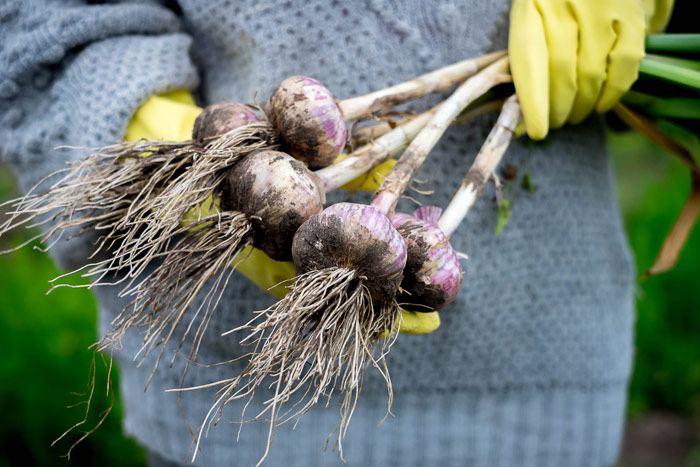
Organic growers tend to have stronger ethics and more sustainable policies than non-organic growers
Can I Eat Raw Garlic?
Yes, you can eat garlic raw. In fact, that’s the best way to consume it, since heating garlic deactivates its allicin content (ever noticed that cooked garlic doesn’t smell? That’s why). Moreover, allicin only becomes active when raw garlic is chewed, crushed or chopped.
Yeah, allicin is a little on the fussy side.
Let’s be realistic, though. Most people hate eating raw garlic and only purchase it to spice up their curries, stir fries and other cooked dishes. So, is there anything we can do to preserve cooked garlic’s healing compounds?
Well… sort of. Allowing crushed garlic to stand for 10 minutes before cooking it improves the formation and synthesis of allicin, making the compound more resistant to higher temperatures. You’ll still lose a lot of allicin in the process, of course, but less than if you chucked the garlic straight into the pan.
Also, don’t forget that raw garlic is an aggressive antibiotic, so eating too much of it can affect intestinal flora and deplete friendly bacteria over time. This shouldn’t be an issue if you only eat 1-2 crushed cloves of raw garlic daily (the maintenance dose), but if you eat more garlic than that, consider taking a break from it every so often to stimulate flora recovery.
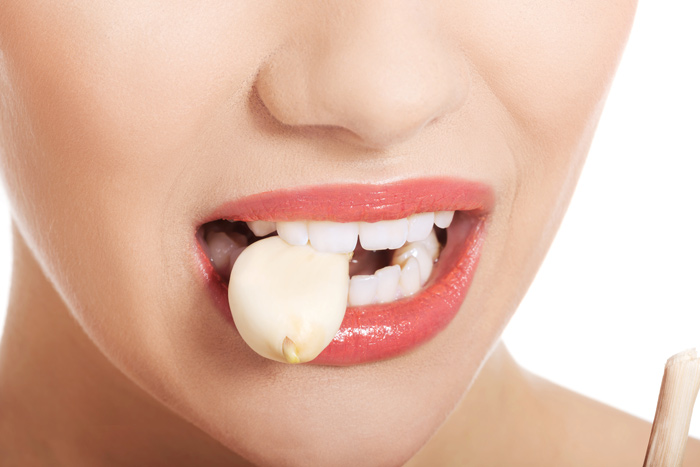
Take it easy!
Cosmetic Uses for Garlic
Because garlic is antifungal, antibacterial, antimicrobial and anti-just-about-everything-else-that’s-bad, its benefits extend far beyond diet. Why not use garlic for the following?
Please bear in mind that garlic is one of the most aggressive medicines in the natural world. Overexposure to it can lead to blisters and rashes in sensitive skin, so listen to your body at all times. If you find garlic too harsh, opt for coconut oil instead. It is just as effective as garlic in the skin, nail and hair care department, though it comes at a much higher price.



